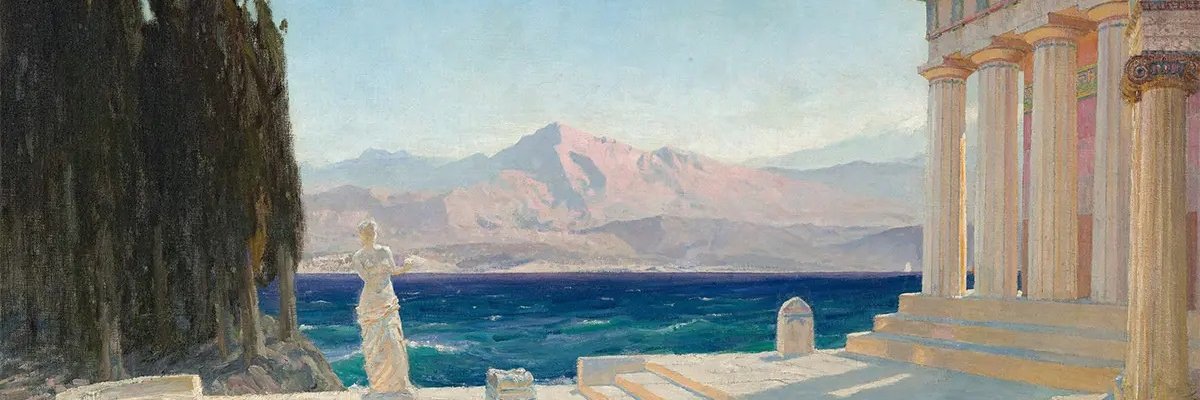
Ghost of Hellas
@ghostofhellas
Greek art and culture through the ages. 🏛️ Your gateway to Ancient Rome & archaeology tours 👉https://colosseumrometickets.com
Tetradrachm of Abdera with leaping griffin, struck under Anaxipolis, Greek, Classical Period, 439/437–411/410 B.C.

A Greco-Persian violet chalcedony scaraboid with a lion-griffin, Classical court style, circa 5th century B.C.; 15⁄16 in. (2.4 cm.) wide.

Ancient silver coin from Knossos showing the Labyrinth, c. 300-270 BCE; diameter 26 mm; weight 10.8 g, Knossos © Ashmolean Museum, University of Oxford

Hellenistic Greek gold snake ring, dated to c. 100 BCE. Currently located in the Benaki Museum in Athens, Greece.

Terracotta lekythos (oil flask). Athena and Owl. ca. 490–480 B.C. Attributed to Brygos Painter.

Tondo from the Coupe à l'oiseleur ("Birdcatcher Cup"), an Ionian black-figure kylix, ca. 550 BC, depicting birds, a grasshopper, a snake, and a central figure among lush vegetation. Currently housed in the Louvre Museum.

Krater decorated with Ganymede, attributed to the Berlin Painter, Athenian, c. 500–490 BC, discovered in Central Italy. Currently housed in the Louvre Museum collection.

Ceramic bull's head rhyton, Greek, circa 340-320 BC from The North Carolina Museum of Art

Photograph showing a general view of the Acropolis in Athens, Greece, taken on 3 March 1917 by photographer Pierre Machard (1877–1944).

Gold signet ring featuring an owl with extended wings and a crescent moon motif, crafted in England between the 15th and early 16th century AD (early Tudor period). Findspot: Norfolk. Collection: British Museum.
Terracotta relief plaque ("Melian relief") depicting Perseus riding Pegasus and holding Medusa’s severed head, with the winged figure of Medusa beneath, from whose neck emerges Chrysaor. Date: c. 490–470 BC. Collection: British Museum, London.

Ring with Leda and Zeus in the form of a swan. Greek, 3rd century B.C. Gold. J. Paul Getty Museum.

Olive Wreath. Place of origin: Bosporan Kingdom. Date: Mid 4th century B.C. Medium: Gold. Collection: Hermitage Museum.

Gold signet ring depicting the goddess Athena seated with an owl, inscribed in Greek with the name "Anaxiles"; circa 400 BC. Excavated at Marion-Arsinoe, in the Paphos district of Cyprus. Collection: British Museum.
Satyr´s head with antlers by Christof Angermair, carved from ivory with stag antlers, steel, and wood, created in Munich between 1624 and 1627. Collection: Bavarian National Museum.

Marble statue of a naked Aphrodite crouching at her bath, also known as Lely’s Venus. Roman copy of a Greek original, 2nd century AD. Height 120cm. Royal Collection Trust / © Her Majesty Queen Elizabeth II 2015

Marble statue of a naked Aphrodite crouching at her bath, also known as Lely’s Venus. Roman copy of a Greek original, 2nd century AD. Height 120cm. Royal Collection Trust / © Her Majesty Queen Elizabeth II 2015



